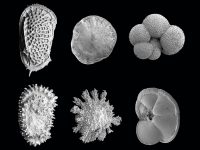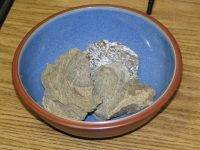The other amber
The unsuspected origin of a treasured component in high perfumery
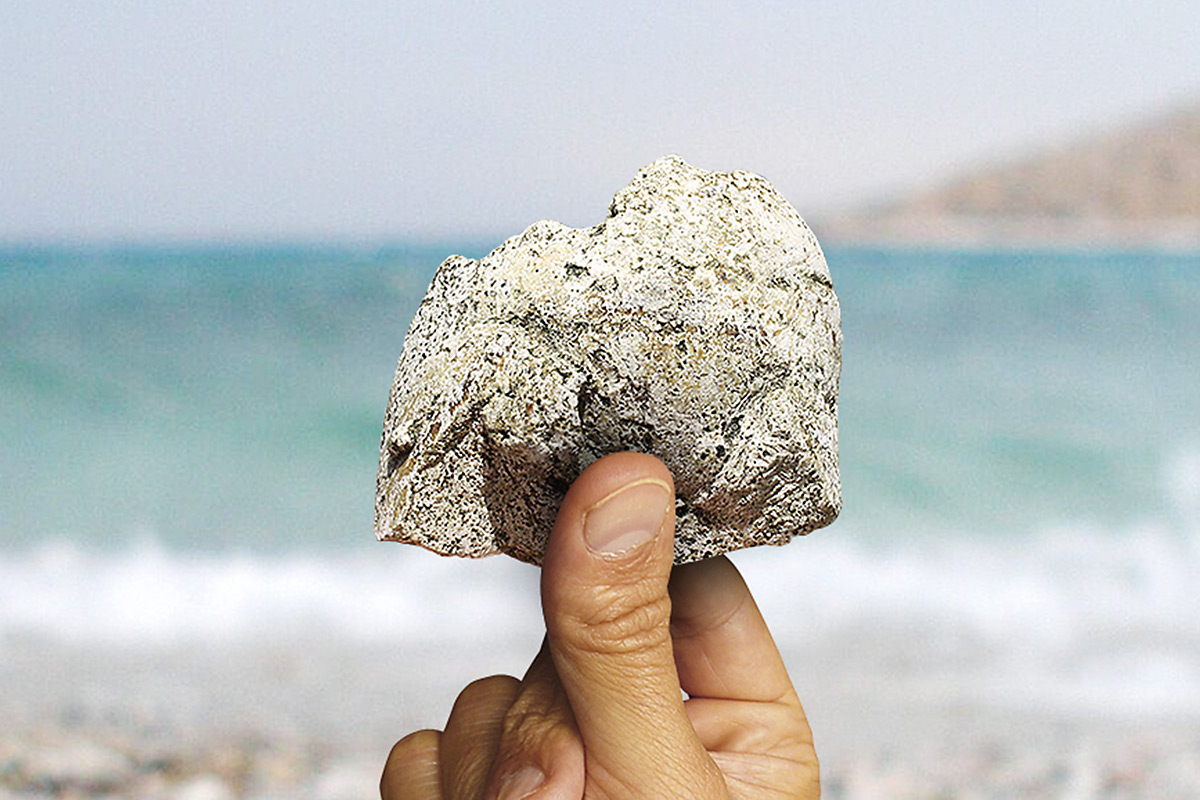
Here is a crazy idea: next time you are walking along a beach, I recommend you to carry a needle and a lighter. And this is why: a hidden treasure could be waiting for you. It will resemble a stone. A simple pebble moulded by tides. But do not trust appearances and proceed with caution. You are looking for an object of a waxy appearance and pungent odor. Hard but brittle. Perhaps riveted with remains of squid beaks. If you spot anything like it, get a hold of it regardless the colour, because a long range of tones is possible, from dark brown to yellowish-grey. Heat the needle with the lighter and then try to insert it into the piece. If you succeed and a sort of chocolate-coloured oil flows from the hole, congratulations. It is highly likely that you have right before your eyes a legendary substance, whose high price has not waned in the last thousand years. It is called ambergris and possesses a unique feature: its particular scent.
Described as marine and animal, sweet and dense, musky and earthy, the ambergris’ scent has captivated humans for generations (Hoare, 2010). Its first echoes come from the medieval Arab world, where it left mark in many texts. It appears in traditional narratives such as One thousand and one nights —in one of its tales, Sinbad finds it on a deserted island after a shipwreck—, as well as in medical treatises such as El libro de la almohada (Ruiz Butrón, 2003). This recipe book, written in the 11th century by Ibn Wafid, constitutes a particularly interesting example, since it refers to «Medina Sidonia’s amber», which was collected on the Atlantic coast of Cádiz and it enjoyed a great reputation.
«Described as marine and animal, sweet and dense, musky and earthy, the Ambergris scent has captivated humans for generations»
That was not the only place where it was found. To the best of our knowledge of that time, the Persian merchants who dominated the commerce of this substance used to travel to remote coasts such as Somalia’s, Borneo’s or Nicobar Islands’ to look for it. And later, after the discovery of America, it was also brought from the New World, as the physician of the 16th century Nicolás Monardes reported. His book Historia medicinal de las cosas que se traen de nuestras Indias Occidentales (Monardes, 1580) contains a chapter dedicated to this substance, where he talks about the transport of pieces of tens of kilograms from Florida and the custom of the inhabitants of these lands to anoint themselves with it due to its good aroma. Monardes asserted as well: «The Amber has great virtues and serves for many things, and it is a thing very expensive, that the good one is worth today more than two times finest gold».
This illustrative phrase of Monardes summarizes the two main constants of the ambergris throughout history: its high cost and the its variety of applications (Srinivasan, 2015). The most important od them, obviously, has been the preparation of perfumes, more so if we take into account that, besides its suggestive and long lasting aroma, this substance has the rare quality of fixing and exalting other fragrances which are more delicate and fleeting. This use continues nowadays and many of the finest contemporary perfumes contain varying amounts of Ambergris in its composition. But this is the only use that persists: the others were abandoned long ago. It will be interesting to review them, since they are well striking under our current perspective.
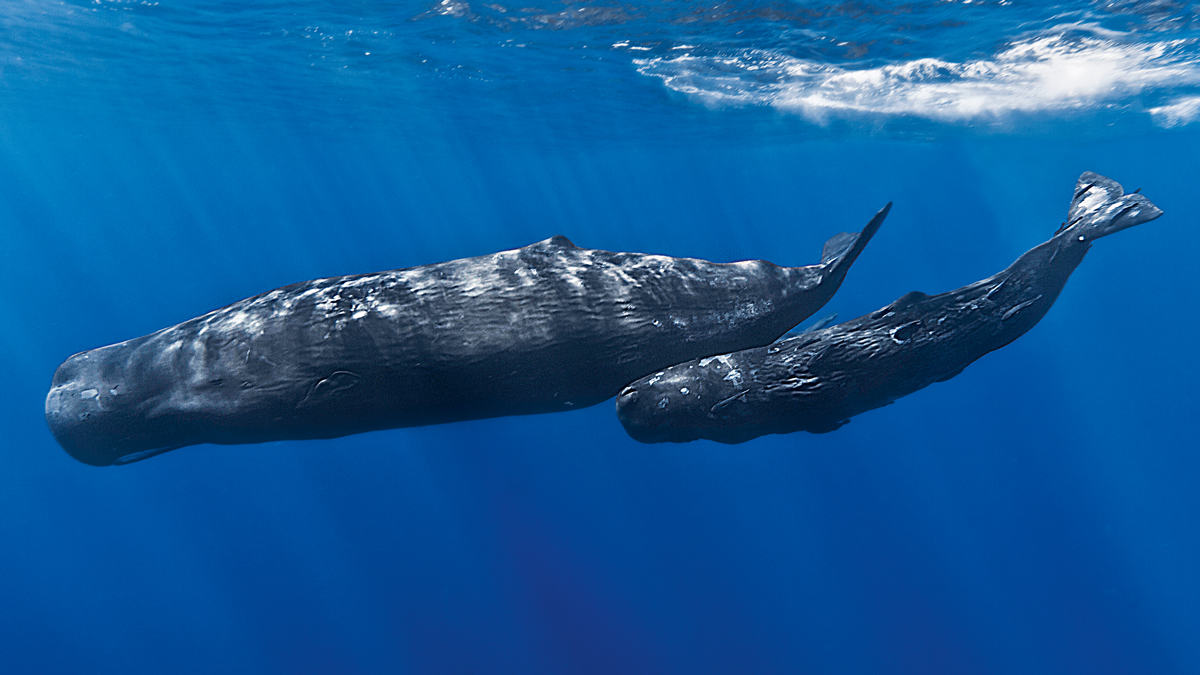
«Up to 455 kg of this substance have been extracted from the interior of a single sperm whale»
From restorative to aphrodisiac
Halfway between perfume and medicine are the pomanders, which can be seen in many Medieval and Renaissance portraits and it was believed that they were useful to keep miasmas away. In a time where the origin of infectious diseases was not known, many people associated them with stinking environments and so they wore these embossed metallic balls filled with aromatic materials. And, totally within the second of these two areas, we find that various systems of traditional medicine use Ambergris as a remedy against ailments, which somehow would be related to its restorative use. Two distinguished Frenchmen were particularly fond of use it in this manner: Cardinal Richelieu and Brillat-Savarin, author of the first gastronomy treaty. It was used as an aphrodisiac as well: the legend says that Giacomo Casanova ate chocolate mousse seasoned with this substance for this very reason. Eggs cooked with identical seasoning also enjoyed great success, and according to the chronicles, this became the favorite dish of king Charles II of England. We will never know what prompted this exotic habit, if the simple culinary pleasure or a taste for ostentation due to the prohibitive price of this item.
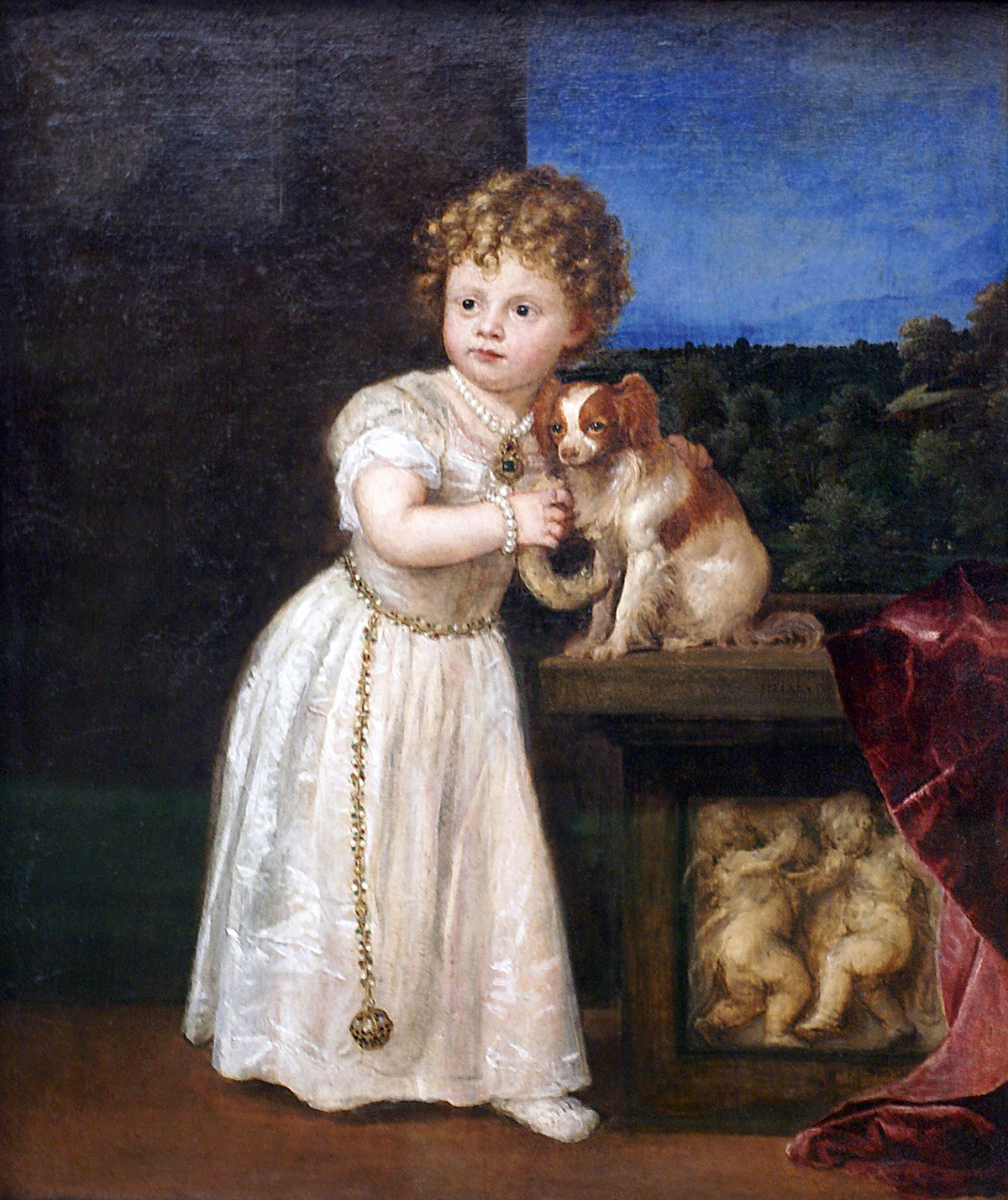
The ambergris was always a scarce commodity, because there was no way to predict where and how it would appear. We might ask why, and how this elusive material is originated and reaches the shores in an inconstant and apparently arbitrary way. The answer cannot be more unusual, because it leads us to the bowels of the largest predator on earth. There, in the very same intestine of the Leviathan, a mass of squid remains and secretions is formed and it will end up becoming ambergris. The best way to illustrate this point is to turn to the pages of Moby Dick. To be precise, to chapter ninety-one. In it, Herman Melville tells how Stubb deceives the crew of a French ship, wickedly named Rose-bud, who are trying to fish a sperm whale found dead in the middle of the ocean. In order to do this, the second officer of the Pequod takes advantage of the poor whaling skills of the French and, after convincing them to leave the remains of the cetacean, he rows to the floating body and digs inside it until: «Dropping his spade, he thrust both hands in, and drew out handfuls of something that looked like ripe Windsor soap, or rich mottled old cheese; very unctuous and savoury withal. You might easily dent it with your thumb; it is of a hue between yellow and ash colour. And this, good friends, is ambergris, worth a gold guinea an ounce to any druggist». (Melville, 1968, p. 473).
«Besides its suggestive and long lasting aroma, this substance has the rare quality of fixing and exalting other fragrances which are more delicate and fleeting»
That is right. Back to reality, up to 455 kg of this substance have been extracted from the interior of a single sperm whale. This happened in 1914 in Australian waters and 23,000 pounds were paid for them. Although, to be fair, this book passage contains an inaccuracy that should be noted. It is very likely that Melville handled ambergris of a quality as high as the one described in his story, but not so much how the substance comes out of the body of the animal. If extracted directly from the whale that generates it, it come out black, soft and with an unpleasant smell. It is not surprising, since originally it is not anything but fecal matter (Clarke, 2006). An intestinal enterolith formed by the indigestible remains of the favourite prey of this species, cuticles of parasitic nematodes and their own juices. It will not be until this concretion is released when a long process of degradation starts, caused by the action of the Sun, the air and the water that concludes on the valued product which is part of so many and so expensive perfumes. A real chemical metamorphosis that lasts for years, even decades, and during which the ambergris floats over seas and oceans until one random day gets stranded in any beach.
Other similar substances
It seems incredible, but there is at least another similar substance used in cosmetics. We are talking about the hyraceum, formed from petrified excrements of the rock hyrax, a South African mammal with the appearance of a rodent that has the habit of living in colonies that defecate in the same place. But, if we extend the analysis to other animal essences, we found musk, civet and castoreum, three glandular secretions obtained respectively from the musk deer, the civet and the beaver, which enjoy great prestige in perfumery since ancient times.
Unfortunately, a large-scale production of these last three would mean the death of thousands of specimens. For this reason, the industry of this sector has had to seek synthetic analogues of similar characteristics. A process that ambergris has also experienced, whose trade is banned in several countries since it originates from an endangered species. Therefore, several substituents from this substance have been developed, all of which try to emulate the characteristics of its main component: the ambrein, although this has its own intricacies, given that this compound does not actually smell. Only by oxidation, it produced two volatile molecules, one of which, called ambroxide, is the main responsible for the famous aroma. Although nowadays large amounts of ambroxide are synthesised from a cheap natural product found in the sage or sclareol, some perfumers still prefer the original ambergris, which emits a softer and more subtle fragrance, because ambre in oxidation happens in continuous but very slow way.
«If extracted directly from the whale that generates it, it come out black, soft and with an unpleasant smell»
Physiological anomaly
Obviously, this inclination to maintain the use of the natural source is limited to the most exclusive perfumes. Something logical if we consider the deterioration suffered by the populations of sperm whales during the last two centuries. Throughout Moby Dick’s publication in 1851, Melville immortalized a livelihood lost today but which constitutes the first great American industry. In its heyday, in mid-19th century, thousands of sailors were employed, who on board of their whaling ships, sailed from iconic harbours as New Bedford and Nantucket island, and undertook trips that could last many years before coming back with their valuable booty: a ship’s hold full of barrels filled with sperm, the oil that sperm whales have in its huge head and that, until petrol arrived, illuminated the cities of all over the world.
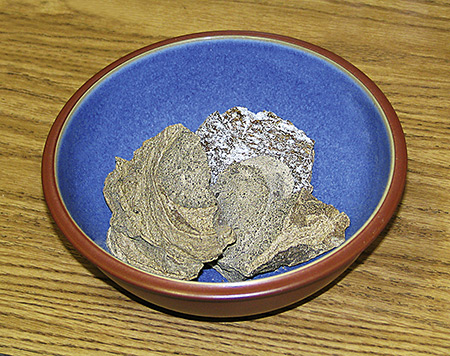
Ambergris was always a scarce commodity, because there was no way to predict where and how it would appear. / Peter Kaminski
During this period, it is believed that a quarter of a million specimens were captured. Many other would be too in the next century, when Europeans took over and had weapons as powerful as the explosive harpoon. Today there are about 360,000 specimens, one-third of the population that should exist at the beginning of their hunt (Taylor et al., 2008). But not every specimen produces ambergris, since intestinal enteroliths that originate it are a physiological anomaly that only affects 1% of them. This is said with caution, because these figures are mere estimations. In fact, much about the life of sperm whales is still hidden in the immensity of the oceans. For example, we still do know if ambergris is released simply through excrements of if it accumulates until it block’s up the cetaceous’ rectum and causes its death. We will have to wait until someone witness one thing or another in order to find out.
Finally, one question, although it seems trivial, has generated quite a few misunderstandings: at what point was the link between the ambergris and sperm whales discovered? If we keep ourselves to the academic field, there is no doubt. We can point out a place and a date. In 1724, the natives of New England Zabdiel Boylston and Paul Dudley published in the Philosophical Transactions journal two articles where they explained this link thanks to the testimony of several sailors from the thriving whaling industry of that time. Thereby, the debate about the origin of this substance was closed. Many possible origins had been theorized. Here is a list: dry sea foam, bird droppings, secretions of crocodiles, remains of wax honeycombs, fungi grown in the deep sea or in coastal rocks, fruits or rubber exuded by coastal trees, bitumen surfaced from the deep sea and even aroma of dragon slime. All of them meaningless speculations but at that time they were part of works that, with more or less success, aspired to capture true knowledge.
«Several substituents from this substance have been developed, all of which try to emulate the characteristics of its main component: the ambrein»
Perhaps due to the confusion in ancient texts, the two mentioned articles have led several authors to grant to American whalers of the 18th century the merit of identifying the natural source of the famous odoriferous product (Kemp, 2012). But they are mistaken. A century earlier, the Portuguese Juan Méndez Nieto had already reported in its Discursos medicinales —a sort of memories of his fictional life— how the Basque crew of a small corsair galleass, in which he was on board, killed a sperm whale calf to melt its fat and try to find ambergris inside it (Méndez Nieto, 1607). This is consistent with the long Basque whaling tradition, which also included the hunting of specimens of this species which they called tubes, and its refined sperm (Alberdi Lonbide, 2013). But if we go back to the year 1300, we discover that the famous Book of the marvels of the world of Marco Polo refers to it when speaking of Madagascar: «They have much amber, because in this sea there are many whales, and as they fish them, amber is obtained, because it is extracted from them» (Polo, 1300). An information that the Venetian must have obtained after talking with Persian merchants during his famous journey to the East. This leads us to the origin of the word amber, which is quite enlightening. First and foremost because the term from which it comes, ‘anbar (رﺑﻨﻋ), denotes in Arabic “Ambergris” as well as “sperm whale”. But also because this word contains four consonants, ‘ayn, nūn, bā’ i rā’, which often implies a different origin. Did they take it from Farsi? This last is a simple conjecture, but it is reasonable to think, although not necessarily true, that people who dominated the trade of this substance for centuries were also the first to notice its connection with the animal that generates it and that this association was reflected in their language.
In a nutshell, next time you walk by a beach, try to emulate the search of a needle in a haystack in the version Ambergris among the rocks. An aromatic treasure may be waiting for you.
References
Alberdi Lonbide, X. (2013). El más oculto «secreto»: Las cacerías de cachalotes y la industria del refinado de esperma en el País Vasco durante los siglos xvii y xviii. Boletín de la Real Sociedad Bascongada de Amigos del País, 69, 331-381.
Clarke, R. (2006). The origin of ambergris. Latin American Journal of Aquatic Mammals, 5(1), 7-21. doi: 10.5597/lajam00087
Hoare, P. (2010). Leviatán o la ballena. Barcelona: Ático de los libros.
Kemp, C. (2012). Floating gold. Chicago: The University of Chicago Press.
Melville, H. (1968). Obras. Barcelona: Editorial Planeta.
Méndez Nieto, J. (1607). Discursos medicinales. Retrieved from http://www.cervantesvirtual.com/obras/materia-autoridad/mendez-nieto-juan-37936
Monardes, N. (1580). Historia medicinal de las cosas que se traen de nuestras Indias Occidentales. Retrieved from https://play.google.com/books/reader?printsec=frontcover&output=reader&id=eAtm3cE1smAC&pg=GBS.PP1
Polo, M. (1300). Libro de las maravillas. Retrieved from http://www.librosmaravillosos.com/ellibrodelasmaravillas/pdf/El%20libro%20de%20las%20maravillas%20-%20Marco%20Polo.pdf
Ruiz Butrón, E. A. (2003). El ámbar de Medina Sidonia en la farmacopea del siglo onceno». Revista Puerta del Sol, 6, 6.Retrieved from http://www.revistapuertadelsol.com/revistapuertadelsol/revistas/numero6/seis/seis.html
Srinivasan, T. M. (2015). Ambergris in perfumery in the past and present Indian context and the western world. Indian Journal of History of Science, 50(2), 306-323. doi: 10.16943/ijhs/2015/v50i2/48241
Taylor, B. L., Baird, R., Barlow, J., Dawson, S. M., Ford, J., Mead, J., … Pitman, R. L. (2008). Physeter macrocephalus. The IUCN Red List of Threatened Species 2008, e.T41755A10554884. doi: 10.2305/IUCN.UK.2008.RLTS.T41755A10554884.en
Acknowledgements
The author wants to thank Dr. Eric Calderwood, professor of Compared Literature at the University of Illinois, for his indispensable help with information about the origin of the word amber.


